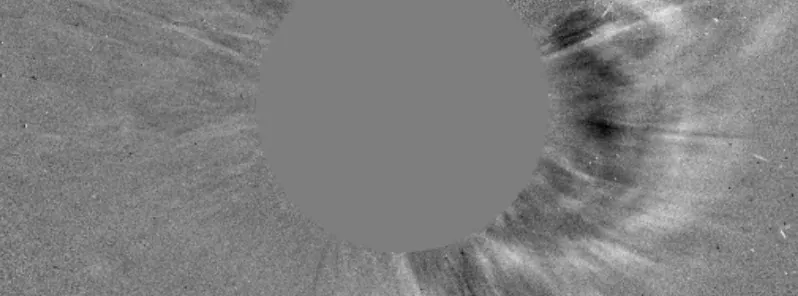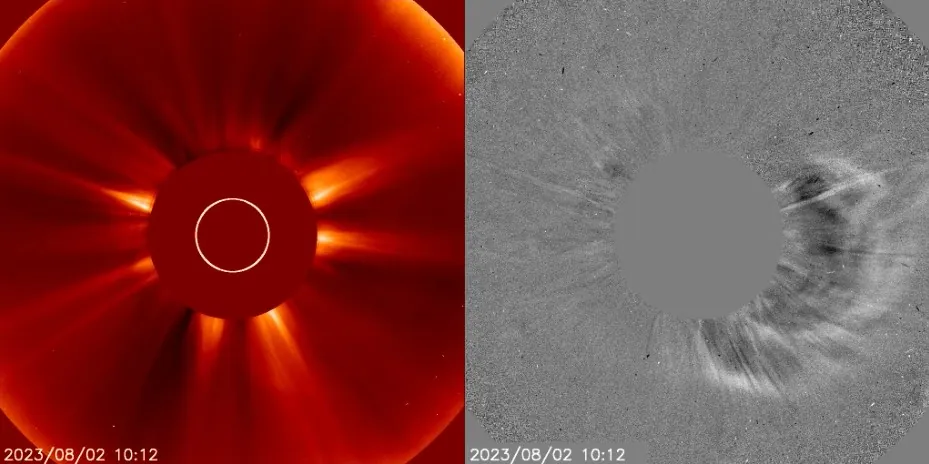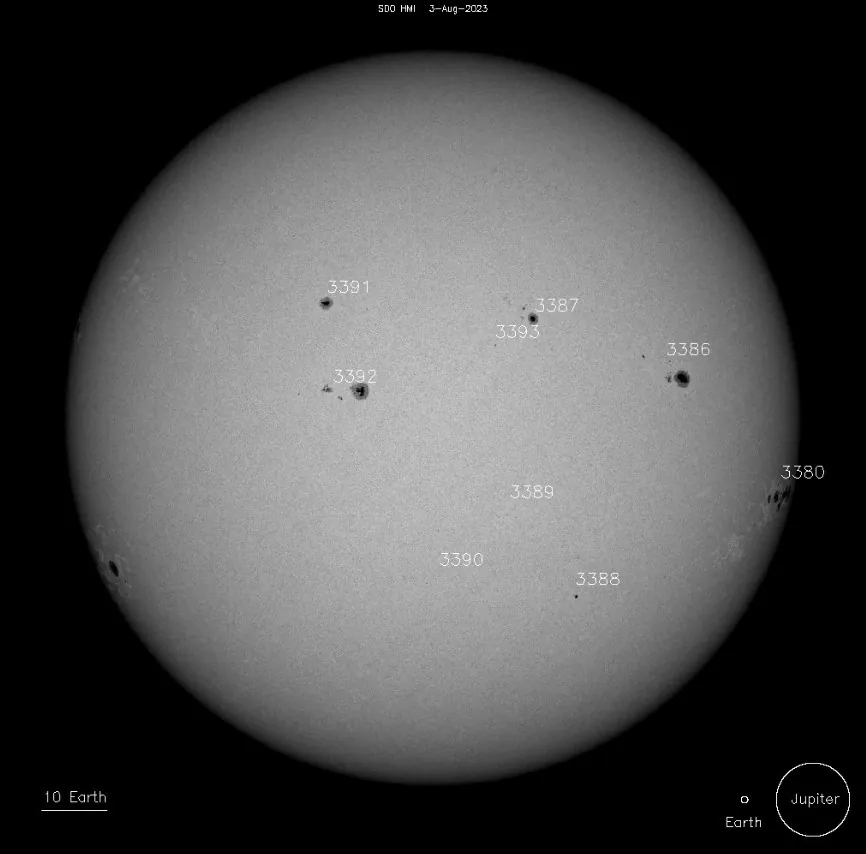Solar filament eruption produces Earth-directed CME, impact expected late August 4 to early August 5

An active filament channel in the vicinity of Region 3386 erupted simultaneously with M1.3 solar flare at 08:12 UTC on August 2, 2023, producing an Earth-directed CME.
A type II and IV radio sweeps were associated with the event, indicating a strong coronal mass ejection (CME) was produced. The CME became visible in LASCO C2 coronagraph imagery off the SW limb starting at 09:36 UTC.
Analysis and modeling for this event indicate a likely hit at Earth, with an anticipated arrival from late August 4 to early August 5.

Solar activity intensified on August 1, with 13 M-class solar flares to 16:30 UTC on August 3, primarily from Region 3380:
| M2.0 | August 3 at 11:55 UTC |
|---|---|
| M1.1 | August 2 at 19:14 UTC |
| M1.3 | August 2 at 16:22 UTC |
| M1.7 | August 2 at 14:52 UTC |
| M1.2 | August 2 at 10:50 UTC |
| M1.3 | August 2 at 08:12 UTC |
| M1.0 | August 1 at 21:51 UTC |
| M1.5 | August 1 at 09:09 UTC |
| M3.6 | August 1 at 06:57 UTC |
| M1.3 | August 1 at 05:37 UTC |
| M2.2 | August 1 at 04:47 UTC |
| M1.2 | August 1 at 02:03 UTC |
| M1.0 | August 1 at 01:56 UTC |
Solar activity is expected to be low with M-class flaring likely (R1-R2/Minor-Moderate) on August 3 as Region 3380 makes its way to the western limb and Region 3392 continues to grow. By August 4 and 5, activity is expected to see a slight decrease as 3380 rotates off the visible disk.

The greater than 2 MeV electron flux was at moderate levels in 24 hours to 12:30 UTC today while the greater than 10 MeV proton flux was at background levels. The greater than 2 MeV electron flux is expected to be at moderate to high levels through August 5 and the greater than 10 MeV proton flux is expected to be at background levels, with a slight chance for an S1 – Minor radiation event due to flare potential and recent activity from AR 3380.
Solar wind parameters were indicative of waning transient influences during the same period. Solar wind speed remained below 400 km/s, the total field was near 11 nT before dropping below 5 nT by 15:00 UTC on August 2, and the Bz component was mostly +/- 5 nT. Phi angle was variable.
Slightly enhanced conditions are expected to persist through the rest of August 3, followed by enhancements late on August 4 to early August 5 as CMEs produced on August 1 and 2 arrive.
There is a chance for G2 – Moderate storms in conjunction with the anticipated arrival of the aforementioned CMEs.
References:
1 Forecast Discussion – Issued: 2023 Aug 03 1230 UTC – Prepared by the U.S. Dept. of Commerce, NOAA, Space Weather Prediction Center
Featured image credit: SOHO LASCO C2. Acquired at 10:12 UTC on August 2, 2023

Commenting rules and guidelines
We value the thoughts and opinions of our readers and welcome healthy discussions on our website. In order to maintain a respectful and positive community, we ask that all commenters follow these rules.